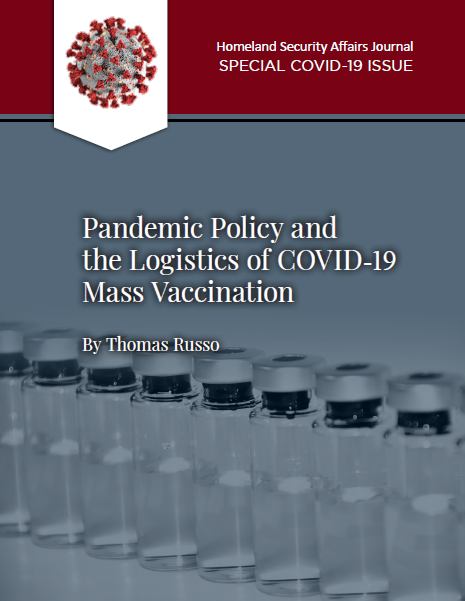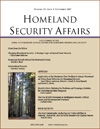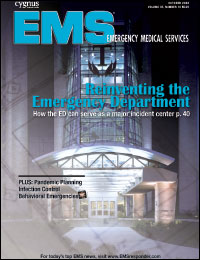Pandemic Preparedness

Pandemics are public health emergencies of national significance and COVID-19 underscored the long reaching effects when those institutions responsible for the public's health failed at adequate preparation. Russo's pandemic writing follows the history of mass vaccination from a time when it was the sole domain of the public sector (public health) to COVID-19 when it evolved to become a public-private partnership with a whole-of-government approch. His most recent work is published in a new book and is a the critical analysis of the COVID vaccination campaign, across two administrations and in the context of building resilience for the next pandemic Chapter 7 "Pandemic Response: The Logistics of COVID-19 Mass Vaccination," The book theme is titled Immigration, the Borderlands, and the Resilient Homeland: A Critical Reader. An anticipated publication date in late 2022.
A cohesive national pandemic policy remains sidelined while the nation scrambles to respond to a national crisis. Russo writes about not only the need for a national pandemic policy, but calls for a wartime footing pandemic preparedness that follows the National Response Framework and Incident Command in federal guidance.
Pandemic Policy and the Logistics of COVID-19 Mass Vaccination

The pandemonium of the COVID-19 Pandemic has yet to be fully worked out as the nation realizes the consequences of a national public health emergency in the absence of a coherent national pandemic policy. Published December 2020 in the Homeland Security Affairs Journal, Russo addresses a decade void of pandemic preparedness as the nation finds itself in the throes of a second pandemic in the 21st century. A cohesive national pandemic policy remains sidelined while the nation had dealt with medical supply chain shortfalls, a public unprepared and resistive to calls for nonintervention protocols and with a vaccine not expected until 2021. The essay builds on Russo's previous work, outlining the logistics expected in a COVID-19 vaccination campaign. His Master's Thesis looked at pandemic vaccine distribution policy titled Strategic Policy for Pandemic Vaccine Distribution, published by the Naval Postgraduate School in 2010
Pandemic Vaccine Distribution Policy for the Twenty-First Century

Published in 2012, Russo called for Congress to establish a pandemic policy that would prepare the nation for future pandemics, building on the success the 2009 H1N1 Pandemic. At the time, the nation investment in domestic vaccine manufacturing capacity by the US government. As a result, a policy of vaccine production self-sufficiency had emerged that should cause policy makers to pause and ask: “what is the next step?” In the near future, this policy may create a surge of efficient vaccine production that current emergency distribution models are ill equipped to manage. As the nation readied for its first pandemic in forty years, it benefited from investments in preparedness but still found itself unprepared for the 2009 H1N1 Pandemic vaccination campaign. This article argues that a policy should be established that compliments the policy of vaccine self-sufficiency and proposes a hybrid model to achieve that goal.
Viewpoint in Homeland Defense and Security

CHDS Thesis Series: Strategic Policy for Pandemic Vaccine Distribution: Russo was invited by the Center for Homeland Defense & Security (CHDS) at the Naval Postgraduate School to offer his perspective on current issues and challenges with pandemic vaccine distribution in the aftermath of the 2009 H1N1 Pandemic. The H1N1 vaccination campaign was the nation's most ambitious mass vaccination campaign in 40 years.
Where Does Pan Flu Emergency Response Plug Into My EOC?

Written for the emergency management community, this articles provides a brief set of topics to ready the EOC for pandemic response. It appeared in the International Association of Emergency Manager's news bulletin.
Getting your EOC Ready for pandemic flu

The health and medical communities are not the only disciplines who sought protocols to protect workers when responding to emergency calls during the threat of a pandemic. This article was published in Homeland Protection Professional and outlined protective measures emergency workers should take.
Pandemic Planning for the Medical Office

The 2006 Pandemic Preparedness Act funded state and local departments of health to work with first responder organizations to ready for the H5N1 Avian Influenza. October, 2006 EMS Responder published an article that addressed pandemic influenza COOP preparedness for EMS first responders. This article directs those that work closely with first responders...and related-disciplines that work on the front line, preparing them for unique roles that may result from pandemic influenza.
